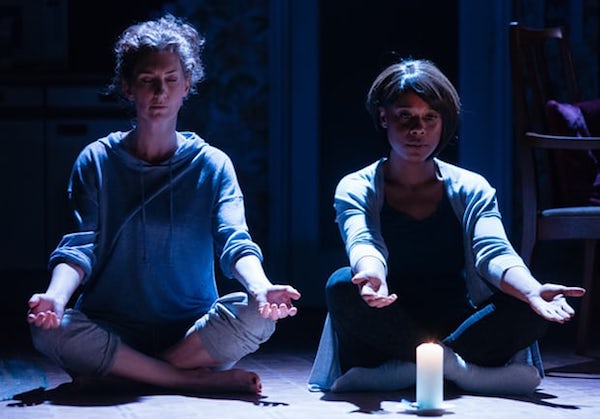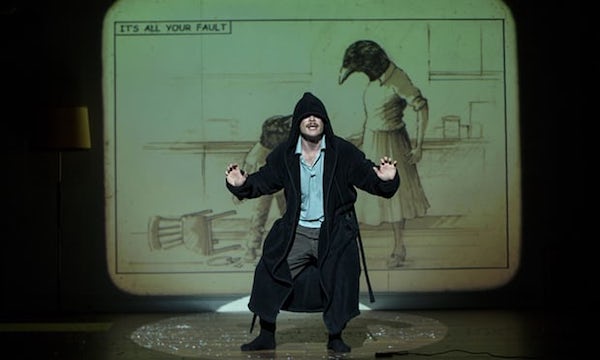As the media brings us constant news of strangers’ deaths, grief memoirs fill our shelves and dramatic meditations are performed to big crowds, we have reached a new understanding of mortality, says Edmund de Waal

[B]ereavement is ragged. The papers are full of a child’s last months, the protests outside hospitals, the press conferences, court cases, international entreaties, the noise of vituperation and outrage at the end of a life. A memorial after a violent death is put up on a suburban fence. It is torn down, then restored. This funeral in south London becomes spectacle: the cortege goes round and round the streets. The mourners throw eggs at the press. On the radio a grieving mother talks of the death of her young son, pleading for an end to violence. This is the death that will make a difference. She is speaking to her son, speaking for her son. Her words slip between the tenses.
Having spent the last nine months reading books submitted for the Wellcome book prize, celebrating writing on medicine, health and “what it is to be human”, it has become clear to me that we are living through an extraordinary moment where we are much possessed by death. Death is the most private and personal of our acts, our own solitariness is total at the moment of departure. But the ways in which we talk about death, the registers of our expressions of grief or our silences about the process of dying are part of a complex public space.
Some are explorations of the rituals of mourning, how an amplification of loss in the company of others – the connection to others’ grief – can allow a voicing of what you might not be able to voice yourself. The actor and writer Natasha Gordon’s play about her familial Jamaican extended wake, Nine Night, is coming to the end of a successful run at the National Theatre. The nine nights of the wake are a theatre of remembrance, a highly codified period of time shaped to allow the deceased to leave the family.

Julia Samuel records in Grief Works, her remarkable book of stories of bereavement, a woman who “asked friends and family to sit shiva [the Jewish mourning tradition] with me at a certain time and place”. And that there was anguish when these particular times were ignored: two friends came at times that were “convenient for them rather than when she was sitting shiva, thus ‘raising all the issues I was temporarily trying to keep contained’”.
As an academic writes in the accompanying notes to artist Taryn Simon’s performance An Occupation of Loss, recently staged in London, “communication between the living and the dead is possible only in mediated forms”. There are obligations we have to fulfil to those who have died. Simon gathered professional mourners from 15 countries (Ghana, Cambodia, Armenia and Ecuador, among others). The mourners wailed and sobbed and keened, the intensity of their expression, their sheer volume, a challenge to the idea that there has to be a silence that surrounds bereavement.
There are silences. Contemporary books on death often take as their premise that to be writing in the first place is a breaking of a taboo. “It’s time to talk about dying,” writes Kathryn Mannix in her book about her work in palliative care, With the End in Mind. “There are only two days with fewer than 24 hours in each lifetime, sitting like bookmarks astride our lives: one is celebrated every year, yet it is the other that makes us see living as precious.” These books record the silence that we in the west have created. By removing dying into a medical context, where expertise and knowledge lie so emphatically with others, we have made death unusual, a process clouded by incomprehension. And by novelty.
So one kind of language we need is that of clarity. A lucidity that allows for the involvement of family and friends alongside healthcare professionals. Clarity, writes Mannix, around the questions such as “when does a treatment that was begun to save a life become an interference that is simply prolonging death? People who are found to be dying despite the best efforts of a hospital admission can only express a choice if the hospital is clear about their outlook.” Conversations about palliative care need extraordinary skill and empathy. These are skills that can be learned.
But for someone writing about their own grief, there are no guidelines. You might have read Thomas Browne’s Urn Burial, or the poems of John Donne, the theories of John Bowlby or Donald Winnicott, Freud’s Mourning and Melancholia, but it simply doesn’t register. Being well read doesn’t help when someone who matters dies. Part of this attempt to start again, to find a form out of the formlessness of grief, is a reluctance to take on the generic language of sympathy, the homogeneous effect of cliche. Bereavement is bereavement, not a masterclass in being well read in the classics. “The death of a loved one is also the death of a private, whole, personal and unique culture, with its own special language and its own secret, and it will never be again, nor will there be another like it,” writes David Grossman in Falling Out of Time, his novel about the death of his son. A death needs a special language.
The language of loss and the framing of sympathy in everyday life is so impoverished, so mired in cliche and euphemism, that deep metaphors of “passing” become thinned to nothing, to sentimentality. The iterations of “losing the battle” and the valorising, endlessly, of “courage” is a way of making the bereaved feel they need to enact a particular role. And then there is the “being strong”. If you are told how wonderful you are for not showing emotion, or for continuing as before, where does that leave being scared? How about denial? Or anger, terror, desolation, loneliness? How about confusion? Why only endurance, resilience, strength? In this need to name, to find precision, accuracy is a measure of love. I think of Marion Coutts’ book The Iceberg, on her dying husband Tom Lubbock’s language, Joan Didion’s The Year of Magical Thinking, charting everything, weighing her responses to her grief. This is different, they say, writing this is a work of mourning.
The greatest of these books find a language that encompasses the sheer confusion of bereavement. In her forthcoming book Everyday Madness: On Grief, Anger, Loss and Love, Lisa Appignanesi writes that “Death, like desire, tears you out of your recognisable self. It tears you apart. That you was all mixed up with the other. And both of you have disappeared. The I who speaks, like the I who tells this story, is no longer reliable.” This is the other loss, that of selfhood, of control, of a forward momentum, of certainty. Appignanesi’s grief at the untimeliness of her husband’s death makes time itself deranged. Her days and weeks and months go awry. Her sense of the past is also called into question. It is excoriating: “My lived past, which had been lived as a double act, had been ransacked, stolen.” Bereavement, she notes, has a deep etymology of plunder. It tears you apart. Where all these registers go wrong, you oscillate between kinds of behaviour that are disinhibited, a derangement of self. It can be physical, a falling, a losing your way. I think of the crow in Max Porter’s Grief Is the Thing with Feathers as the deranged, ransacking presence in a family where the mother has died.

These are images that go deep into history. In the Book of Lamentations we read that God “has made me dwell in darkness … he has walled me in and I cannot break out … He has weighed me down with chains … He has made my path a maze … He has forced me off my way and mangled me.” The Hebrew word eikh (how) opens the Book of Lamentations and then reappears throughout the text. This how is not a question, more a bewildered exhortation. You are beyond questions. All you can do is repeat.
In Anne Carson’s poem Nox, a response to the death of her brother, she refused to accept any conventional form. So the poem comes like a box, a casket, of fragments, attempts at definitions, parts of memories. This seems appropriate. The shape of grief is different each time. That is why the shard – the pieces of broken pottery that are ubiquitous across all cultures – is often used as an expressive image of loss. Think of Job lamenting to God, sitting on a pile of broken shards. In my own practice as a potter, whenever I pick up pieces of a dropped vessel I notice that each shard has its own particularity. Each hurts.
In her study of the deaths of writers, The Violet Hour, Katie Roiphe writes that “moving on, as a concept, is for stupid people, because any sensible person knows grief is a long-term project. I refuse to rush. The pain that is thrust upon us let no man slow or speed or fix.” Bereavement takes a pathway that is different for each and every one of us. It takes different registers, different words. And that is what I take away from this very particular nine months of reading and reflecting on mortality. That there is change in the public space around death. This change is remarkable and wonderful when it comes to end-of-life care: the hospice movement and the training in palliative care are one of the greatest and most compassionate changes to occur in the last 30 years.
And, more slowly, it is happening outside the hospitals and clinics and hospices. People do want to read and talk about grief. For this we have to be grateful to those writers who are trying to find their own shard-like languages to express their own bereavements.
Complete Article ↪HERE↩!
